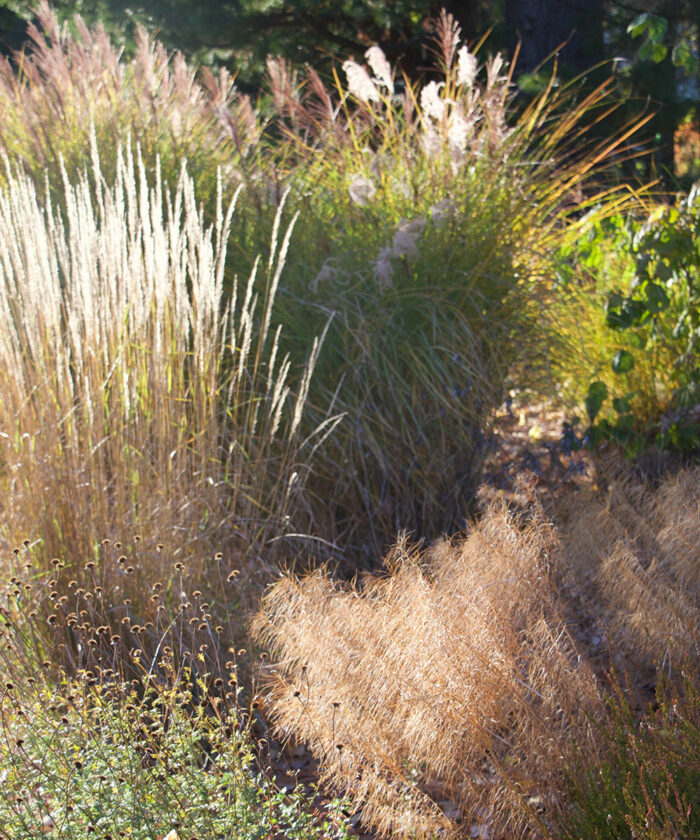
Grasses are often overlooked in Northeastern gardens. Most grasses look rather uninteresting in spring, which is when many of us buy plants for the garden. However, a trip to a botanic garden or a good garden center in late summer often reminds us that grasses have merit and deserve a chance in our gardens.
Our taste in grasses has changed since the late 1980s, when tall, variegated miscanthus (Miscanthus spp. and cvs., Zones 5–9) were all the rage in perennial garden schemes. Problems with self-seeding and the inevitable flopping over soured our taste for miscanthus, but today things have changed. There are plenty of good grasses that only get better with age and have few problems. Here are just a few grasses that are easy to care for and relatively free of problems.

Fountain grass
Pennisetum alopecuroides, Zones 6–9
With many selections available, native fountain grass may be pricier than most other grasses at the garden center, but as with well-made Italian shoes, there’s a reason for that. All the commercial selections are excellent performers in the garden. At about the same cost as a hydrangea (Hydrangea spp. and cvs., Zones 4–9), they deliver just as much visual impact. Fountain grass will form fluffy mounds of seed heads that look like rabbit tails. They will shine in full sun to partial shade throughout autumn.
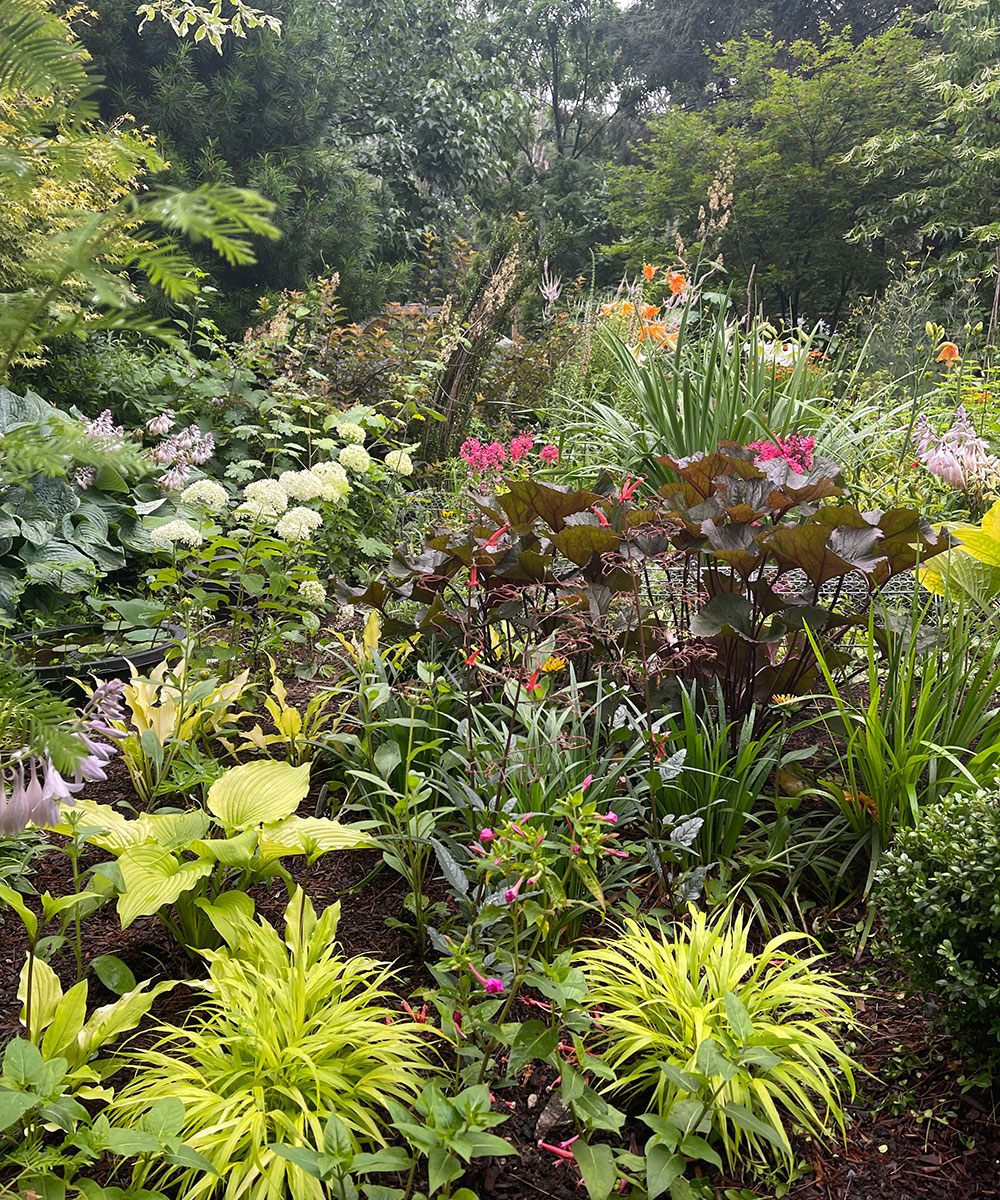
Japanese forest grass
Hakonechloa macra cvs., Zones 5–9
As with fountain grass, Japanese forest grass can be a bit more costly than other grasses, but it’s genuinely worth the investment. A slow spreader, Japanese forest grass performs like no other grass in the garden. It forms flowing mounds of long, plumelike leaves that seem to flow like water as they tumble in one direction or another. The effect is tidy and neat, leaving one with the desire to always want more in other areas of the garden. Japanese forest grass is best in light shade, and a number of selections are available, ranging from golden-leaved varieties to ones that are variegated, red, or tipped with violet. One can never have enough Japanese forest grass.
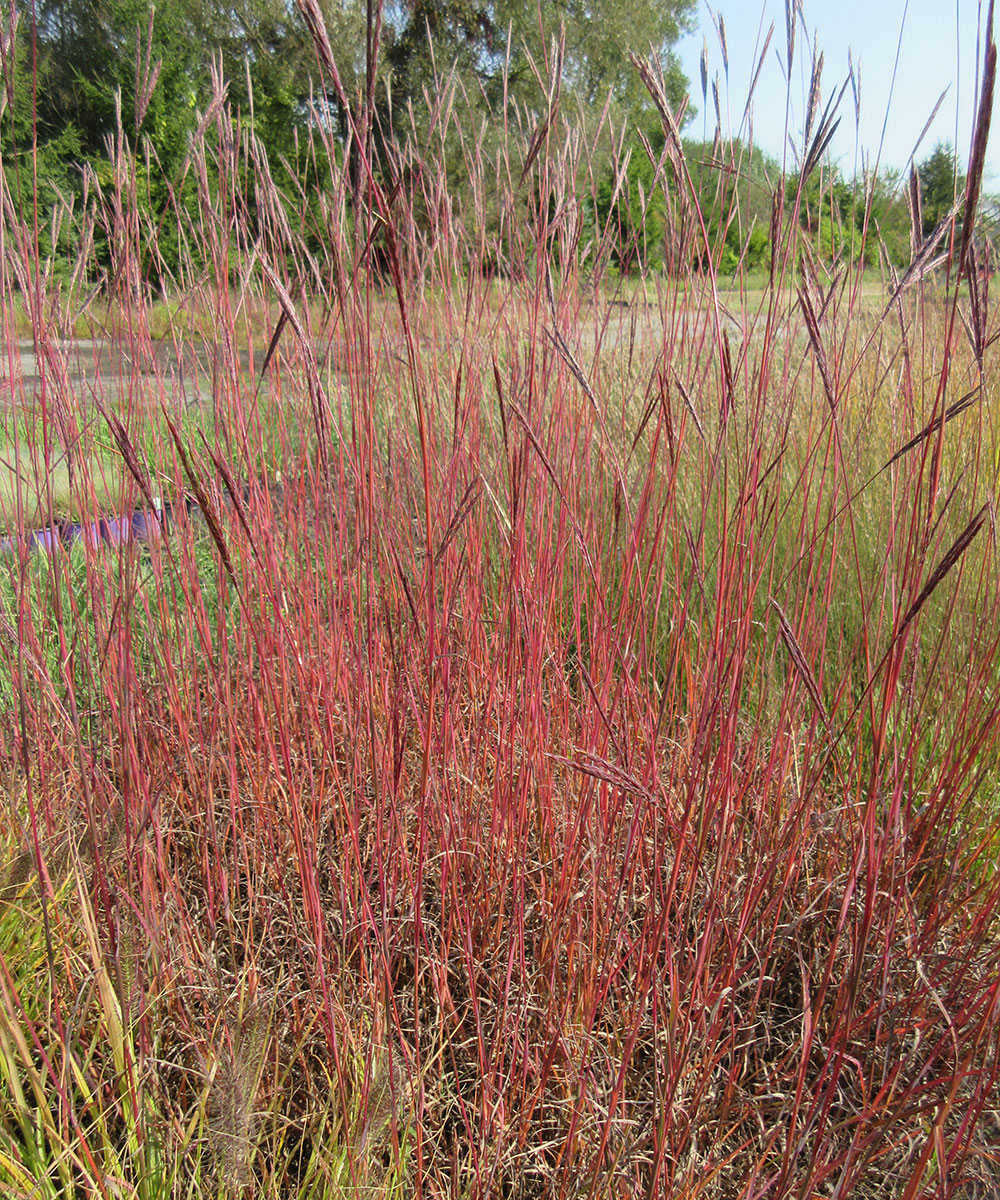
Big bluestem
Andropogon gerardii, Zones 2–9
While any bluestem (Andropogon spp. and cvs., Zones 4–10) is desirable, this Northeast-native species will be a star in any full sun garden, especially in matrix or meadow plantings, where it makes its greatest impact. When the setting sun in autumn catches the seed heads with its low angle of light, the effect is truly spectacular. The bluish to violet-tinted stems add a texture found in few other grasses. Best planted in groups, this is a grass that is attractive through late winter and doesn’t self-seed like many other grasses do.
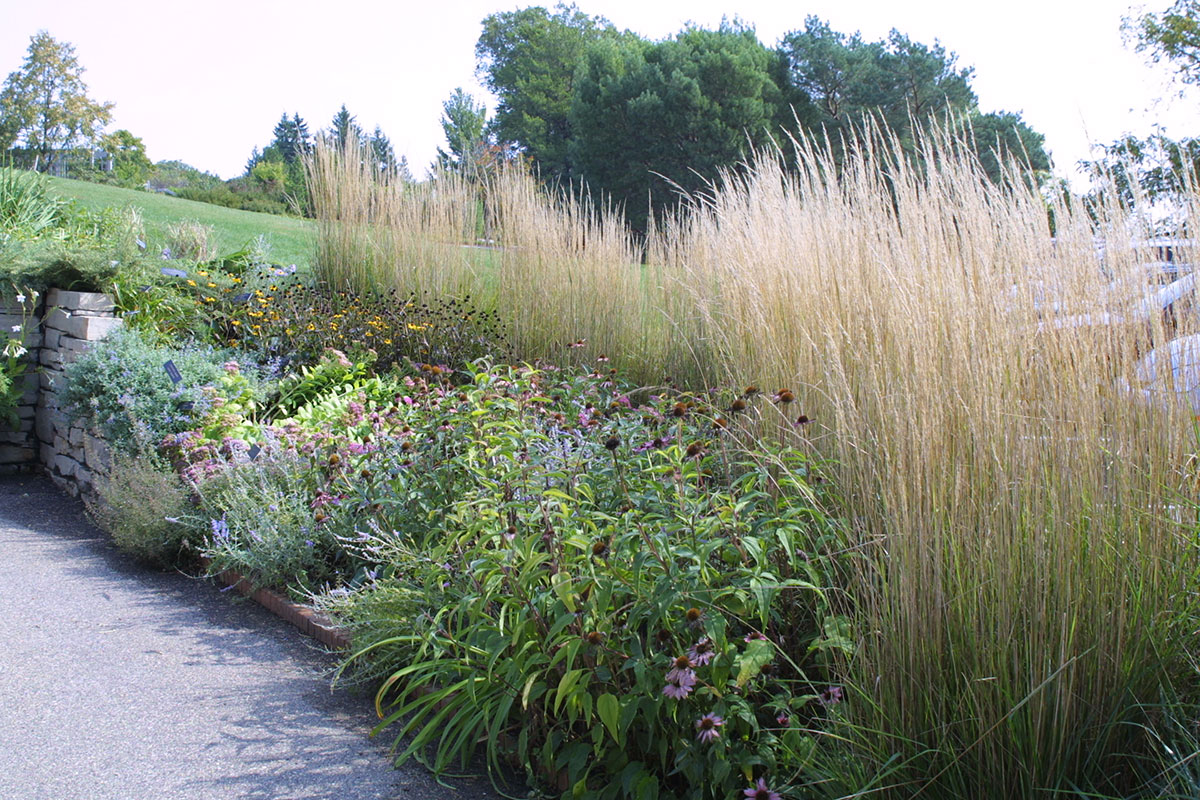
Feather reed grass
Calamagrostis × acutiflora cvs., Zones 5–9
While some may turn their noses up at this now commonly used landscape plant seen in planting beds at strip malls and gas stations, it’s a worthy contributor to any home garden. It does well planted in grids, in long rows as in a hedge, or even in small groups within a mixed planting as long as it has full sun. Few grasses offer the tidiness and height of ‘Karl Foerster’ feather reed grass (Calamagrostis × acutiflora ‘Karl Foerster’, Zones 5–9). Its tall stems are ramrod straight and look like a distinctive exclamation mark. They will remain upright until the end of winter, adding great winter interest. Heavy snow can often smother other grasses, but not feather reed grass.
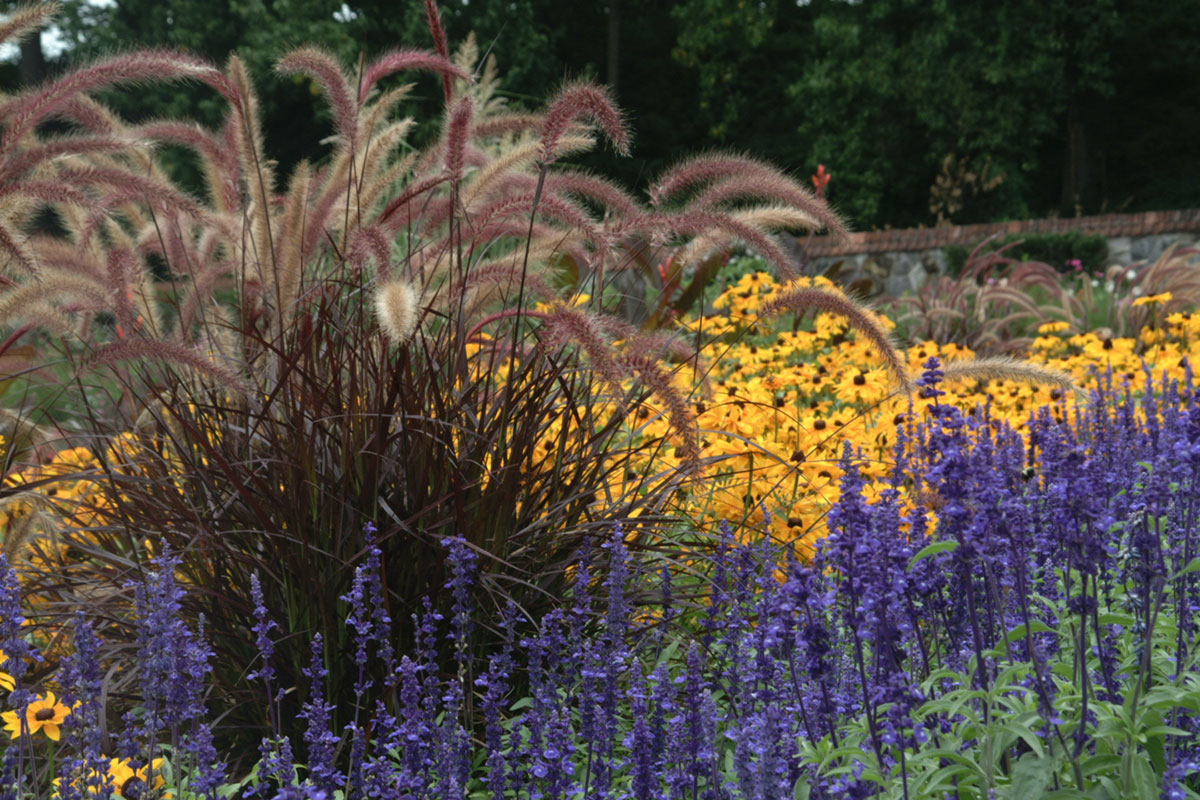
Bonus: Purple fountain grass
Pennisetum setaceum ‘Rubrum’, Zones 9–10
Although purple fountain grass is not hardy in the Northeast, it is worth growing as an annual. Even after the growing season, keep it around during winter for stunning winter interest. While it is similar to fountain grass, purple fountain grass has a much different habit and color. It’s taller and looser, producing long wands of fluffy foxtail-shaped seed heads that are reddish purple. They catch the light in autumn and winter like few types of grass can. Like others in the genus, purple fountain grass forms mounds that remain tidy with excellent form and structure. Grow it in full sun to partial shade.
The benefits of adding grasses to the Northeastern gardens are many, from adding valuable texture and forms in contemporary landscape schemes to intermixing with native perennials in a matrix planting or a pollinator-friendly meadow. Grasses are becoming more popular, and luckily, there are plenty to choose from. Any of the above grasses are well-behaved, tidy, and perfect for the Northeast.
—Matt Mattus is the author of two books: Mastering the Art of Flower Gardening and Mastering the Art of Vegetable Gardening. He gardens in Worcester, Massachusetts.


















Comments
Log in or create an account to post a comment.
Sign up Log in